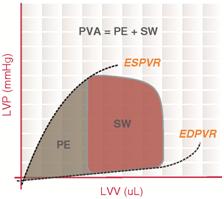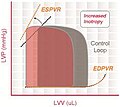Acute cardiac unloading
Acute Cardiac Unloading
Acute cardiac unloading refers to the rapid reduction of ventricular workload and myocardial oxygen consumption in patients with heart failure or acute myocardial infarction. This therapeutic approach aims to improve cardiac function and promote myocardial recovery by decreasing the mechanical stress on the heart.
Mechanism
Acute cardiac unloading is achieved through various mechanical and pharmacological interventions. The primary goal is to reduce the end-diastolic volume and end-systolic volume, thereby decreasing the ventricular pressure and wall stress. This can be accomplished using devices such as intra-aortic balloon pumps, ventricular assist devices, and extracorporeal membrane oxygenation systems.
Physiological Effects
The physiological effects of acute cardiac unloading include:
- Reduction in myocardial oxygen demand: By decreasing the workload of the heart, the oxygen demand of the myocardium is reduced, which is beneficial in ischemic conditions.
- Improvement in coronary perfusion: Unloading can enhance coronary blood flow by reducing left ventricular end-diastolic pressure, thereby improving myocardial perfusion.
- Prevention of adverse remodeling: By reducing mechanical stress, acute unloading can prevent or mitigate adverse ventricular remodeling, which is a common consequence of heart failure.
Clinical Applications
Acute cardiac unloading is utilized in various clinical scenarios, including:
- Acute myocardial infarction: To limit infarct size and preserve myocardial function.
- Cardiogenic shock: To stabilize hemodynamics and support end-organ perfusion.
- Heart failure exacerbations: To relieve symptoms and improve cardiac output.
Devices and Techniques
Several devices and techniques are employed for acute cardiac unloading:
- Intra-aortic balloon pump (IABP): A device that inflates and deflates in the aorta to reduce afterload and improve coronary perfusion.
- Ventricular assist devices (VADs): Mechanical pumps that support the function of the left or right ventricle.
- Extracorporeal membrane oxygenation (ECMO): Provides both cardiac and respiratory support by oxygenating blood outside the body.
Pressure-Volume Relationship
The pressure-volume relationship is a key concept in understanding cardiac function and the effects of unloading. The pressure-volume loop is used to visualize changes in cardiac function during unloading.
Complete Unloading
Complete unloading refers to the total cessation of ventricular work, often achieved with advanced mechanical support devices. This approach is used in severe cases where maximal reduction of myocardial stress is required.
Related Pages
Gallery
Transform your life with W8MD's budget GLP-1 injections from $125.
W8MD offers a medical weight loss program to lose weight in Philadelphia. Our physician-supervised medical weight loss provides:
- Most insurances accepted or discounted self-pay rates. We will obtain insurance prior authorizations if needed.
- Generic GLP1 weight loss injections from $125 for the starting dose.
- Also offer prescription weight loss medications including Phentermine, Qsymia, Diethylpropion, Contrave etc.
NYC weight loss doctor appointments
Start your NYC weight loss journey today at our NYC medical weight loss and Philadelphia medical weight loss clinics.
- Call 718-946-5500 to lose weight in NYC or for medical weight loss in Philadelphia 215-676-2334.
- Tags:NYC medical weight loss, Philadelphia lose weight Zepbound NYC, Budget GLP1 weight loss injections, Wegovy Philadelphia, Wegovy NYC, Philadelphia medical weight loss, Brookly weight loss and Wegovy NYC
|
WikiMD's Wellness Encyclopedia |
| Let Food Be Thy Medicine Medicine Thy Food - Hippocrates |
Medical Disclaimer: WikiMD is not a substitute for professional medical advice. The information on WikiMD is provided as an information resource only, may be incorrect, outdated or misleading, and is not to be used or relied on for any diagnostic or treatment purposes. Please consult your health care provider before making any healthcare decisions or for guidance about a specific medical condition. WikiMD expressly disclaims responsibility, and shall have no liability, for any damages, loss, injury, or liability whatsoever suffered as a result of your reliance on the information contained in this site. By visiting this site you agree to the foregoing terms and conditions, which may from time to time be changed or supplemented by WikiMD. If you do not agree to the foregoing terms and conditions, you should not enter or use this site. See full disclaimer.
Credits:Most images are courtesy of Wikimedia commons, and templates, categories Wikipedia, licensed under CC BY SA or similar.
Contributors: Prab R. Tumpati, MD







